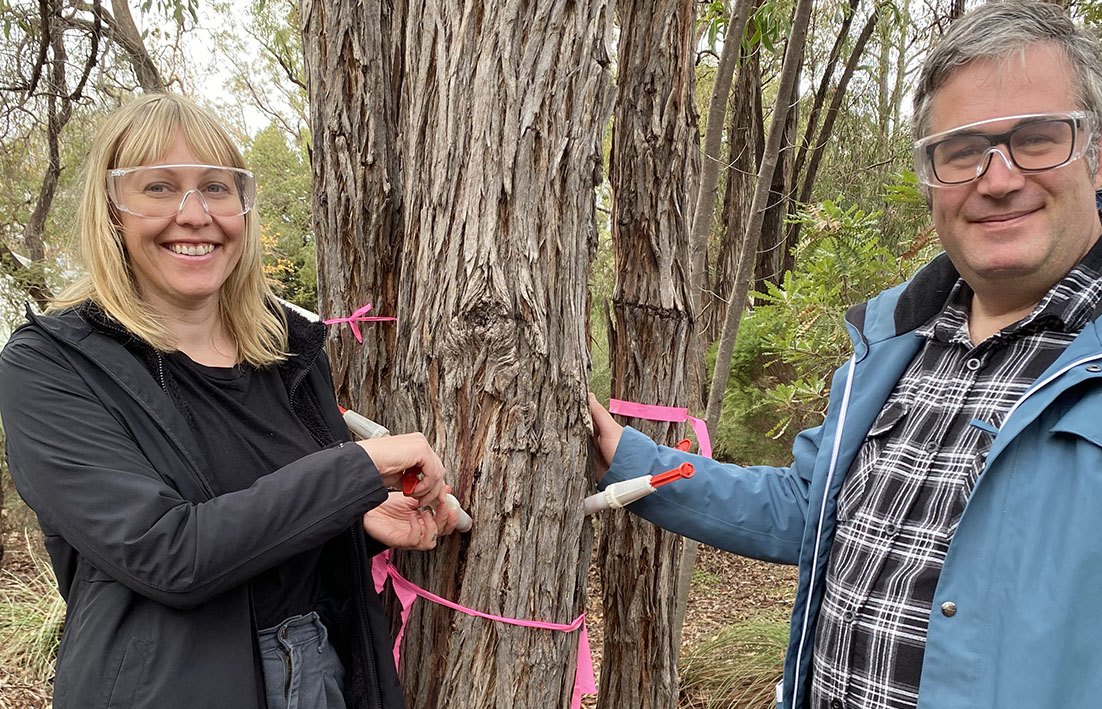
PERTH Hills environmental group, the Dieback Working Group, are working with the state government’s department of conservation to help educate Perth students about the dangers and treatments of dieback.
Phytophthora dieback is a plant disease that moves through forests and tree ecosystems through soil movement.
Humans and animals can spread dieback by tracking mud and soil from an infected area into a non-infected one.
The Dieback Working Group, based in the Perth hills, has been working with the Department of Conservation’s nearer to nature’ program to bring educational programs to local schoolkids, teaching them how to properly clean mud and dirt off shoes and clothes, and how to prevent and treat dieback with phosphite injections.
One of the more recent workshops was with Kalamunda Senior High School, during which the group injected more than 50 trees surrounding the Perth Hills Discovery Centre with phosphite, protecting a large area of native forest from dieback.
Working group training and education manager Amy Priemus said the programs would help educate young people about the impacts of dieback and how important it was to stop its spread.
“Unlike some other plant diseases, the spread of dieback can be controlled through limiting soil movement. Awareness and education are key for this to be effective, with the potential for just one person to accidentally spread dieback into a large area,” she said.
“It’s important for students to learn how to safely interact with natural areas to protect our bushland and forests.
"This is particularly important for young people living among protectable natural areas, like those in Kalamunda.
“Young people are enthusiastic learners and are full of great ideas, you never know who the next up-and-coming industry expert might be.
“Receiving this kind of education at a young age will have a lasting impact and may even inspire students to enter into an environmental industry.
"We’ve certainly heard feedback from students many years later reporting this!”
She said that while the classroom aspect of the excursion was necessary for learning about dieback and its impact.
“However, the magic of this training session is that it’s not only environmental education for the students, it’s hands-on conservation in the field with a lasting impact.
"Injecting dieback-threatened trees around the Perth Hills Discovery Centre with phosphite will offer them protection against Phytophthora for years to come,” she said.
A department spokesperson said their ‘outdoor classrooms’ created through the ‘nearer to nature’ program provided a unique, hands on approach to environmental learning, and the department was constantly updating, adjusting and improving the program.
The programs are continually monitored to meet school needs to keep them relevant to the curriculum and interesting for students, as well as safe and practical at a delivery level.
For example, venturing deep into the forest to trap and release wildlife or examining fire scar areas.